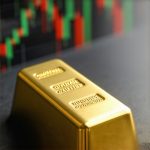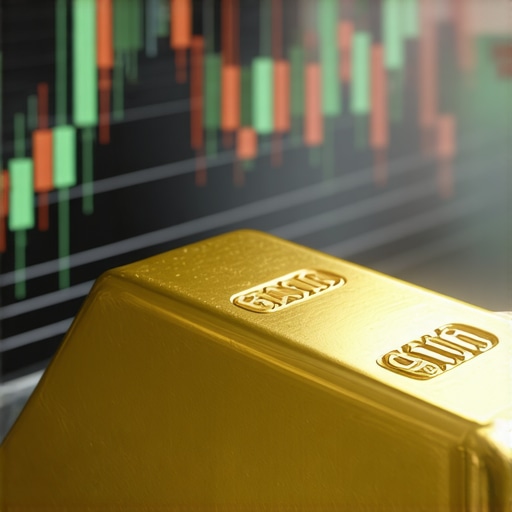Understanding Critical Gold Demand Trends for Strategic Investments
As the global economy continues to evolve, the significance of understanding critical gold demand trends has never been more vital for investors. Gold, often considered a safe haven asset, serves multiple purposes ranging from jewelry to industrial applications, and its demand dynamics can greatly influence market prices. In this article, we will explore the various factors driving gold demand and how they can impact your investment decisions.
Key Factors Influencing Gold Demand
Several key factors shape the demand for gold in today’s market. One of the most prominent is the global economic climate. Economic uncertainty tends to drive investors towards gold as a protective measure, enhancing its demand. Furthermore, the performance of equity markets can also influence gold demand; when stock markets face volatility, investors often seek stability in gold.
Another significant factor is the demand from central banks. Central banks around the world have been increasing their gold reserves as a response to inflation fears and economic instability. This trend can further elevate the demand for gold, impacting its price and availability in the market. For insights on how central bank activities influence gold prices, check this article.
Jewelry and Industrial Demand
Jewelry manufacturing remains a major driver of gold demand, particularly in emerging markets such as India and China. Cultural significance and changing consumer preferences can lead to increased purchases during festive seasons, which in turn affects market prices. Understanding these trends is crucial for anyone looking to invest in gold.
Additionally, industrial applications of gold, such as in electronics and technology, are on the rise. As industries innovate and demand for advanced technology grows, so does the need for gold, further solidifying its position in the market. Investors should keep an eye on the supply and demand dynamics to make informed decisions.
Investment Strategies in Response to Demand Trends
For investors, staying ahead of these gold demand trends is essential for maximizing returns. Strategies such as diversifying your portfolio with gold ETFs or even considering physical gold investments can yield significant benefits, especially in times of economic uncertainty. For a more in-depth look at this, refer to our guide on investing in gold ETFs.
In conclusion, being aware of critical gold demand trends is pivotal for making informed investment choices. By understanding the intertwined nature of economic conditions, central bank policies, and consumer behavior, investors can navigate the complexities of the gold market effectively. Stay tuned for more insights on gold investment strategies as we continue to explore this fascinating and lucrative asset.
Evaluating Gold Investment Opportunities in Current Markets
As investors navigate the complex landscape of gold investments, understanding the right opportunities becomes crucial. Evaluating the performance of gold stocks and gold ETFs is essential for making informed choices. With various investment vehicles available, identifying which suits your financial goals can significantly impact your return on investment.
Gold Stocks vs. Gold Mutual Funds: A Comparative Analysis
When deciding between gold stocks and gold mutual funds, several factors come into play. Gold stocks represent shares in mining companies, and their performance is closely tied to gold prices. On the other hand, gold mutual funds pool resources from multiple investors to invest in a diversified portfolio of gold-related assets. Understanding these differences can help investors align their strategies with market trends.
Understanding Gold ETFs: Key Features and Benefits
Gold ETFs (Exchange-Traded Funds) provide a convenient way to invest in gold without the need for physical storage. They trade like stocks and offer liquidity, making them an attractive option for individuals seeking exposure to gold without the complexities of physical ownership. For insights on maximizing returns through gold ETFs, refer to our article on how to approach gold ETFs.
Spotting Gold Price Fluctuations: Essential Techniques
Being able to spot fluctuations in gold prices is vital for investors. Factors such as geopolitical events, changes in interest rates, and currency fluctuations can all impact gold prices. By monitoring these elements, investors can make timely decisions that capitalize on price movements.
Investment Strategies for the Future: Positioning in Gold
Investors looking to position themselves strategically in gold must consider long-term trends. With the evolving economic landscape, gold is increasingly seen as a hedge against inflation and market volatility. The role of gold as a hedge cannot be underestimated, especially in uncertain economic times.
Adapting to Market Changes: The Role of Central Banks
The activities of central banks also play a significant role in shaping gold prices. As central banks increase their gold reserves, it signals confidence in gold as a stable asset. Keeping up with central bank purchases can provide investors with insights into market trends and potential price movements.
Future Trends in Gold Investments: What to Watch For
Looking ahead, investors should be aware of emerging trends such as the impact of technological advancements on gold mining and trading. Innovations in mining techniques and trading platforms can enhance market efficiency and open new avenues for investment. Keeping an eye on these trends will be essential for making informed investment choices.
In summary, navigating the world of gold investments requires a thorough understanding of market dynamics, investment vehicles, and economic indicators. By leveraging insights into gold demand trends and investment strategies, investors can position themselves effectively within this lucrative market.
Understanding Gold Demand Trends: Key Insights for Investors
As the gold market evolves, recognizing gold demand trends becomes essential for making informed investment decisions. Factors such as economic growth, geopolitical tensions, and changes in consumer behavior can significantly influence gold demand. Investors should be aware of how these trends impact gold prices and adjust their strategies accordingly. For a deeper dive into the fluctuations of gold prices, check out our article on the impact of demand on gold prices.
Economic Indicators Affecting Gold Prices
Economic indicators play a vital role in shaping gold prices. Metrics such as inflation rates, unemployment figures, and GDP growth can trigger changes in investor sentiment towards gold. An increase in inflation often leads investors to flock to gold as a safe haven, driving prices up. Staying informed about these economic indicators can provide investors with a predictive edge in the market.
Geopolitical Factors: Navigating Uncertainty in Gold Investments
Geopolitical events, including conflicts, trade disputes, and policy changes, have a direct impact on gold prices. During times of uncertainty, gold often serves as a hedge against market volatility. Monitoring global political developments is crucial for anticipating potential price movements. Investors should consider diversifying their portfolios to mitigate risks associated with geopolitical uncertainties.
Strategies for Investing in Gold: Aligning with Market Trends
To maximize returns, investors need effective investment strategies for gold. This involves aligning investment choices with current market trends and understanding the dynamics of gold trading. Exploring the best investment strategies can help investors develop a comprehensive approach to their gold investments.
Long-Term vs. Short-Term Investment Approaches
Deciding between long-term and short-term investment strategies can significantly influence outcomes. Long-term investors often focus on the overall appreciation of gold, while short-term investors may capitalize on market fluctuations. Each approach carries its own set of risks and rewards, and understanding personal investment goals is key to selecting the right strategy.
Diversification: Balancing Your Gold Investment Portfolio
Diversification remains a fundamental principle in investing, including in gold. Investors should consider a mix of gold stocks, ETFs, and physical gold to spread risk effectively. This balanced approach can help mitigate losses while maximizing potential gains. For more on diversifying your gold investments, see our guide on evaluating gold stocks.
Future of Gold Investments: Trends to Watch in 2025
Looking ahead, the future of gold investments will be shaped by emerging trends in technology, environmental factors, and market dynamics. Innovations in mining and trading technologies can enhance efficiency and accessibility in the gold market. Additionally, the growing focus on sustainability may drive changes in how gold is sourced and traded.
Technological Advancements in Gold Trading
Technological advancements are transforming gold trading. The rise of digital platforms and blockchain technology is making it easier for investors to buy and sell gold. These innovations not only improve transparency but also reduce transaction costs, making gold investment more appealing to a broader audience.
In conclusion, understanding the complexities of the gold market and adapting to evolving trends is crucial for successful investing. By leveraging insights into gold demand, economic indicators, and technological advancements, investors can position themselves for optimal returns in the years to come.
Understanding Gold Market Dynamics: Key Insights for Investors
In the ever-evolving landscape of gold investments, grasping gold market dynamics is crucial for investors looking to optimize their portfolios. The interplay of various factors such as global economic conditions, investor behavior, and market sentiment can significantly influence gold prices. To enhance your understanding, explore our article on the future of gold price predictions.
Impact of Central Banks on Gold Prices
Central banks play a pivotal role in shaping gold prices through their monetary policies and gold reserves. When central banks increase their gold holdings, it often signals confidence in the metal as a safe-haven asset, leading to price surges. Conversely, a reduction in gold purchases can indicate a shift in market sentiment. Keeping track of central bank activities is essential for investors to anticipate potential price movements in the gold market.
The Role of Gold in Portfolio Diversification
Gold serves as an effective tool for portfolio diversification, especially during economic downturns. By including gold in an investment portfolio, investors can reduce overall risk and volatility. Its negative correlation with major stock indices often makes gold a go-to option for safeguarding wealth. For a deeper understanding of how gold can enhance your investment strategy, read our guide on gold as a hedge against inflation.
Gold Investment Strategies: Maximizing Potential Returns
To navigate the complexities of the gold market, investors need well-defined investment strategies for gold. Aligning with current trends and understanding market nuances can help maximize potential returns. Navigating gold demand trends can provide investors with actionable insights to refine their strategies.
Understanding Gold Trading Techniques
Effective gold trading techniques are essential for capitalizing on market movements. Investors should familiarize themselves with various trading methods, including futures contracts, options, and spot trading. Each technique carries unique risks and rewards, necessitating a thorough understanding of market signals and trends to make informed decisions.
Evaluating Gold Investment Vehicles
Investors have multiple options when it comes to gold investment vehicles, including physical gold, gold ETFs, and gold stocks. Each type of investment offers distinct advantages and drawbacks. For instance, while physical gold provides a tangible asset, ETFs offer liquidity and ease of trading. Understanding these differences is critical for selecting the right investment vehicle based on individual financial goals.
Future Trends in Gold Investment: What to Watch
As we look ahead, various trends are set to shape the gold investment landscape. Factors such as technological innovations, changing consumer preferences, and regulatory developments will influence how gold is purchased and traded. Keeping an eye on these trends can help investors position themselves strategically.
Emerging Technologies in Gold Trading
With the rise of blockchain technology and digital platforms, gold trading is becoming more accessible and transparent. These advancements not only streamline transactions but also reduce costs, making gold investments more appealing to a wider audience. Investors should stay informed about these technological changes to leverage new opportunities in the market.
In summary, understanding gold market dynamics, central bank influences, and investment strategies is essential for informed decision-making. By staying updated on emerging trends and refining investment techniques, investors can enhance their chances of success in the gold market.
Frequently Asked Questions about Gold Investments
What is the best way to invest in gold?
The best way to invest in gold depends on your financial goals. You can choose among physical gold, gold ETFs, or gold stocks. Physical gold provides a tangible asset, while ETFs offer liquidity and ease of trading. It’s essential to evaluate your risk tolerance and investment strategy before making a decision.
Is investing in gold a good idea during inflation?
Yes, gold is often considered a hedge against inflation. As the value of currency decreases, gold typically retains its value or appreciates, making it a desirable asset during inflationary periods.
How does global economic conditions affect gold prices?
Gold prices are highly sensitive to global economic conditions. Factors such as economic growth, interest rates, and geopolitical tensions can affect investor sentiment, leading to fluctuations in gold demand and prices.
What role do central banks play in the gold market?
Central banks hold significant gold reserves and their buying or selling activities can greatly impact gold prices. An increase in central bank purchases often signals confidence in gold as a safe-haven asset, driving prices up.
How often should I review my gold investment strategy?
It’s advisable to review your gold investment strategy at least annually or whenever there are significant changes in the market or your personal financial situation. Keeping abreast of market trends can help you make informed decisions.
Can I invest in gold through my retirement account?
Yes, you can invest in gold through a self-directed IRA, which allows you to hold physical gold, gold ETFs, and other precious metals. Ensure you follow IRS regulations for such investments.
What are the risks associated with investing in gold?
Investing in gold carries risks such as market volatility, potential lack of liquidity, and storage costs for physical gold. It’s essential to weigh these risks against the potential benefits in your investment strategy.
How can I stay updated on gold market trends?
Staying updated on gold market trends can be achieved by following financial news, subscribing to market analysis reports, and engaging with investment communities online. Resources like financial news websites and investment blogs can provide valuable insights.
What should I consider when investing in gold stocks?
When investing in gold stocks, consider the company’s operational efficiency, the quality of its mining assets, and market conditions. Gold stocks can offer leveraged exposure to gold prices but also come with operational risks.
Authority Resources for Gold Investment Insights
For further exploration into gold investments, consider these trusted resources:
- World Gold Council – Provides comprehensive reports and insights on gold market trends and investment opportunities.
- Investopedia – Offers educational articles on various investment vehicles, including gold.
- Kitco – A leading platform for gold prices, charts, and industry news.
- Bloomberg Commodities – Features up-to-date news and analysis on commodity markets, including gold.
- SPDR Gold Shares – Information on gold ETFs and investment strategies for gold.
Conclusion: Navigating the Gold Investment Landscape
In conclusion, understanding gold market dynamics, investment strategies, and emerging trends is essential for successful gold investments. By staying informed and adapting your approach based on market conditions and personal financial goals, you can enhance your investment portfolio. Gold remains a vital asset for diversification and wealth preservation, making it a worthy consideration for any investor’s strategy.











The insights on gold demand trends are incredibly relevant, especially given the current market volatility. I’ve noticed a significant increase in investor interest towards gold, particularly as a hedge against inflation. The point about central banks boosting their gold reserves really highlights how institutional confidence in this asset class is rising.
In my personal experience, I’ve found that following emerging markets like India and China for jewelry demand can be quite valuable. It’s fascinating to see how seasonal trends and cultural celebrations can drive substantial increases in gold purchases. Additionally, with technology improving the efficiency of gold trading, I’m curious about how blockchain will transform gold investments in the coming years. Are there any specific technological advancements you feel will have a major impact on the gold market?
Overall, I believe that diversifying one’s investment portfolio to include both physical gold and gold ETFs can mitigate risks and enhance potential gains, especially during uncertain times. Maintaining a balanced approach will be crucial, as you mentioned in your article. It’s an exciting time to be involved in gold investments!
Michael’s point about the growing role of blockchain technology in gold trading is insightful. From what I’ve observed, blockchain’s potential to increase transparency and reduce fraud in gold transactions is particularly promising. Beyond that, advancements in AI and machine learning are also beginning to influence how investors analyze market trends and price fluctuations, offering more precise predictions. However, I think one challenge that often gets overlooked is balancing the demand coming from industrial uses versus traditional uses like jewelry and investment. With electronics increasingly demanding gold, do you think this shift might cause significant price volatility distinct from typical investment or cultural factors? Moreover, considering central banks’ increased reserves, their policies might act as a stabilizing force, but could they also potentially limit liquidity for smaller investors? In my experience, staying informed about these multifaceted influences is crucial, and I’m curious how others weigh the impacts of industrial demand and central bank activity in their gold investment strategies.
This article provides a comprehensive overview of the factors influencing gold demand and highlights key strategies for investors. I’ve personally noticed that during periods of economic uncertainty, the demand for gold tends to spike, especially from central banks. Their increasing reserves as a response to inflation concerns have been particularly notable over the past couple of years. However, I wonder how future technological advancements, like the integration of blockchain, will truly influence liquidity and transparency in gold trading. In my experience, diversifying with both physical gold and ETFs has helped balance risks, but I’m curious about the potential impact of rising industrial demand, especially as electronics consumption grows. Has anyone experienced significant price shifts driven purely by industrial use demand? It seems that understanding these nuances is critical for making more informed investment choices in such a fluctuating market.